Nineteenth Century
The Assassin Brothers
Nowadays, with a name like 'The Assassin Brothers', these two would probably be offered a reality TV show deal .There are in France two brothers with the surname of Assassin, who recently obtained the necessary permission from the high functionary called the Keeper of the Seals to change their name to one less offensive. After mature reflection, they decided to change their name to Berge. Now that it is too late to alter it, they have discovered, to their intense annoyance, that their new name happens, by a singular coincidence, to be that of the chief assistant to M. Deibler, the public executioner, who will, in all probability, succeed to M. Deibler's gruesome business.
Posted By: Alex - Sat Dec 07, 2013 -
Comments (3)
Category: Weird Names, Nineteenth Century
Magneto-Conservative Garments
Advertised in the Los Angeles Herald and elsewhere, late 19th and early 20th centuries:

More in extended >>
Posted By: Alex - Fri Nov 22, 2013 -
Comments (5)
Category: Fashion, Underwear, Medicine, Nineteenth Century
The Fire Escape Parachute
Patented by Benjamin Oppenheimer in 1879. I wonder if he ever tried testing it.
The accompanying drawing represents a side view of a person with my improved fire escape or safety device, by which a person may safely jump out of the window of a burning building from any height; and land, without injury and without the least damage, on the ground; and it consists of a parachute attached, in suitable manner, to the upper part of the body, in combination with overshoes having elastic bottom pads of suitable thickness to take up the concussion with the ground.
Posted By: Alex - Sun Sep 22, 2013 -
Comments (7)
Category: Inventions, Patents, Nineteenth Century
The Society of Disappointed Lovers
From the Lockport Daily Journal - Mar. 21, 1890. I can't find any mention of the existence of this society after 1890, so perhaps they all failed the requirement to "shun female society," and the society promptly ceased to exist.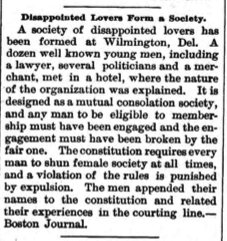
A society of disappointed lovers has been formed at Wilmington, Del. A dozen well known young men, including a lawyer, several politicians and a merchant, met in a hotel, where the nature of the organization was explained. It is designed as a mutual consolation society, and any man to be eligible to membership must have been engaged and the engagement must have been broken by the fair one. The constitution requires every man to shun female society at all times, and a violation of the rules is punished by expulsion. The men appended their names to the constitution and related their experiences in the courting line.
Posted By: Alex - Wed Sep 04, 2013 -
Comments (7)
Category: Couples, Nineteenth Century
Madge Gill
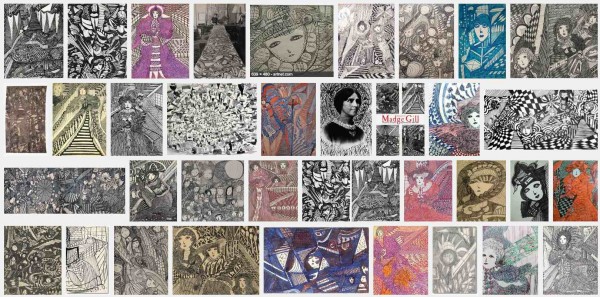
[Click to enlarge]
Thanks to WU-vie Mark De Novellis, we learn of a new UK exhibition devoted to the work of outsider artist Madge Gill. If you image-google her name, you get tons of examples, such as you see above.
A nice visit if you're in the UK over the next several months.
Exhibition home page.
From the Wikipedia entry:
After recovering from her illness, she took a sudden and passionate interest in drawing, creating thousands of mediumistic works over the following 40 years, most done with ink in black and white. The works came in all sizes, from postcard-sized to huge sheets of fabric, some over 30 feet (9.1 m) long. She claimed to be guided by a spirit she called "Myrninerest" (my inner rest) and often signed her works in this name.
Posted By: Paul - Fri Aug 30, 2013 -
Comments (3)
Category: Museums, New Age, Outsider Art, Reader Recommendation, Europe, Nineteenth Century, Twentieth Century
An unusual deck of cards
On Feb. 15, 1890, a short article appeared in the Chicago Tribune, telling the story of a man who had an unusual deck of cards. He had found every card lying on the street. It took him twenty years to collect the entire pack. Here's the article:
A Chicago Sport Has Spent Twenty Years in Picking up a Pack
Frank Damek, a member of the sporting fraternity of Chicago, has probably the queerest deck of cards in the world. He has been twenty years collecting the pack and is exceedingly proud of it. He first began by picking up playing cards in the street when he happened to run across them. In this way he got fifteen or more before he began striking duplicates. Some days he would find two or three, and then it would be months before he would see another stray pasteboard. But he persevered and always kept his eyes open to add to his strange collection.
In ten years he had all but thirteen cards necessary to complete his deck. In the next three years he considered himself lucky in finding all but four. The missing ones were the jack of clubs, the deuce of diamonds, and the trey of spades. In the course of another year he picked up the eight of diamonds and six months later was overjoyed to find what he at first thought was a full deck of cards lying on the sidewalk on Dearborn street, between Adams and Jackson streets.
He thought his long search was at an end and that he could easily complete his wonderful deck. The jack of clubs and the trey of spades were there all right, but five or six cards were missing, and among them the deuce of diamonds. It seemed as though he would never be able to secure his fifty-second card, but the other day he entered one of the suburban trains on the Northwestern, and almost the first thing he saw was the deuce of diamonds face upwards in the aisle. It was gilt-edged and glossy backed, the finest of them all. He had been searching for it for five and a half years, and breathed a sigh of relief. The pack is composed of cards of all qualities, from the cheapest to the highest prices. Some are clean and bright and others are soiled and well worn.
I'll add this to the list of weird collections. Though, honestly, I have some doubts that the story is true. It reads like the kind of thing that reporters back then routinely made up to fill column space.
Posted By: Alex - Wed Aug 14, 2013 -
Comments (6)
Category: Collectors, Nineteenth Century
Criminals and their ears
In his post yesterday, Chuck mentioned that police were using "earprints" to track down criminals. The use of earprints may be something new, but the use of ears to identify criminals is actually pretty old.Back in the late 19th century, the French detective Alphonse Bertillon developed an elaborate ear classification system, in the belief that ears could be used as a unique means of identification, in the same way that fingerprints were. The Strand Magazine (May 1904) ran an article, with accompanying ear pictures, about Bertillon's system:

Bertillon's ear classification system was quite influential. It's the reason that police started taking mugshots from the side, as well as from the front, so that they could get a picture of the criminal's ear.
Posted By: Alex - Mon Aug 12, 2013 -
Comments (5)
Category: Crime, Nineteenth Century
Vivacious Chicken
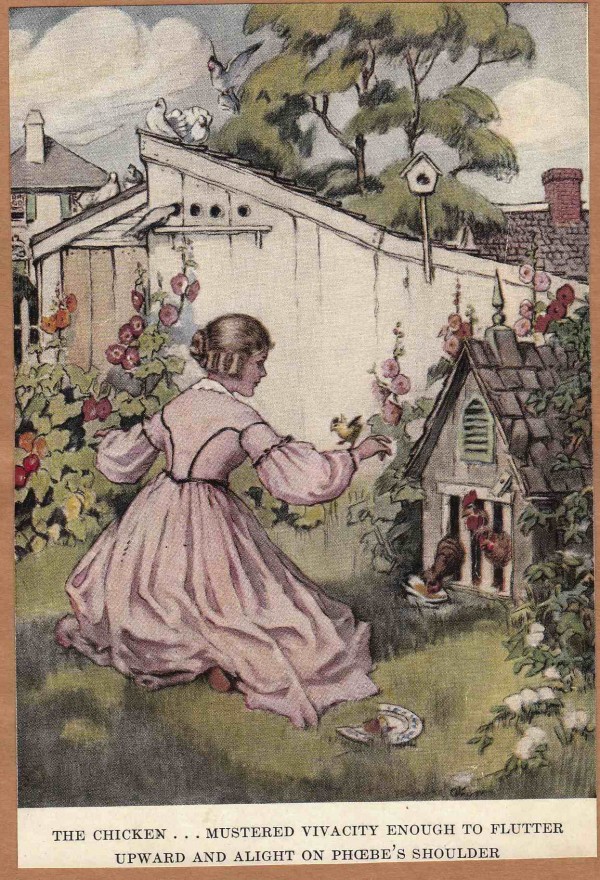
[Click to enlarge]
An illustration from Hawthorne's The House of the Seven Gables.
Maybe it's just me, but the notion of carrying a "vivacious chicken" around on one's shoulder strikes my funnybone just perfectly.
Posted By: Paul - Sun Jul 28, 2013 -
Comments (9)
Category: Animals, Emotions, Literature, Nineteenth Century
The Geometry of Squirrel Hunting
From Practical and Mental Arithmetic, on a New Plan, in which Mental Arithmetic is Combined with the Use of the Slate... by Rosell C. Smith (1829). Via Ptak Science Books.
Posted By: Alex - Sat Jul 20, 2013 -
Comments (12)
Category: Nineteenth Century
Monsters of Iowa
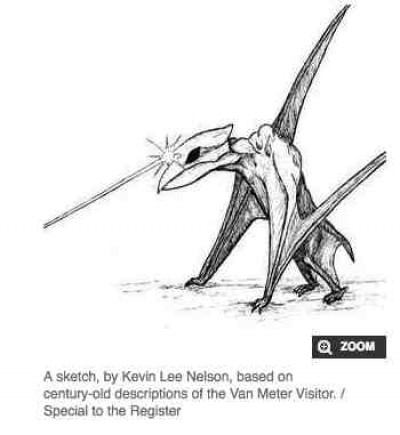
Who would ever suspect that boring old Iowa was host to so many odd creatures?
Consider this winged monster from 1903, above.
Or this account, below, found along with more Iowa monsters in UNNATURAL PHENOMENA. (See book sidebar.)
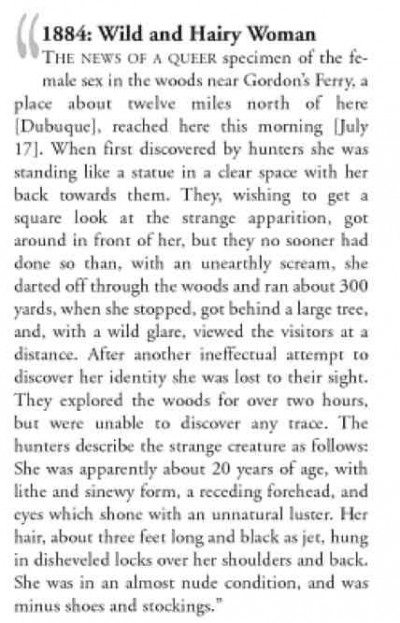
Posted By: Paul - Mon Jul 08, 2013 -
Comments (4)
Category: Cryptozoology, Fictional Monsters, Regionalism, Superstition, 1900s, North America, Nineteenth Century

| Who We Are |
|---|
| Alex Boese Alex is the creator and curator of the Museum of Hoaxes. He's also the author of various weird, non-fiction, science-themed books such as Elephants on Acid and Psychedelic Apes. Paul Di Filippo Paul has been paid to put weird ideas into fictional form for over thirty years, in his career as a noted science fiction writer. He has recently begun blogging on many curious topics with three fellow writers at The Inferior 4+1. Contact Us |





